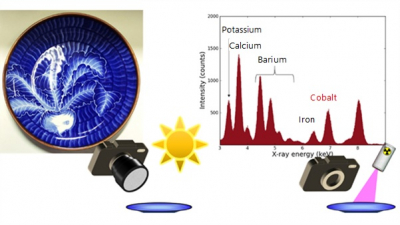
Kenji Sakurai and Wenyang Zhao from the X-Ray Physics Group of the Japanese National Institute for Materials Science (NIMS) have succeeded in developing new techniques to perform analysis and imaging of chemical elements by taking images of a target material using an ordinary, visible-light digital camera. With a slight modification, they can obtain X-ray spectra from processed images. The technique is expected to allow simpler and convenient X-ray analysis applicable to a wider range of fields under diverse conditions.
The research team recently discovered methods to conduct analysis and imaging of chemical elements using fluorescent X-ray data obtained from a digital camera equipped with a visible-light CMOS (complementary-metal-oxide-semiconductor) device. The camera was also equipped with an opaque and thin window, which only allows X-rays to penetrate, between the lens and sensor. When fluorescent X-rays emitted from a sample pass through the window and enter the CMOS device, electric charges are generated. The energy of incident X-rays can be quantified by instantaneously measuring the amount of charges generated. However, charges generated are recorded across multiple pixels, and pixel data is frequently lost. To address this issue, the team developed a method to retrieve the lost data by examining the dispersion state of charges across pixels and by processing images for both the amount and position of charges initially recorded. Using this method, the team could obtain reliable X-ray spectra in a stable manner. The team analysed fluorescent X-rays emitted from a ceramic plate shown in the figure using this method, and detected cobalt only in the upper plate surface which was painted blue, but not in the bottom surface.
The research team also succeeded in creating images showing the distribution of different elements across a sample, using the pinhole camera principle. In future studies, the team hopes to contribute to materials development by applying the techniques to visualise the movement of chemical elements in video images and trace chemical reaction processes.
This study was in Scientific Reports.










